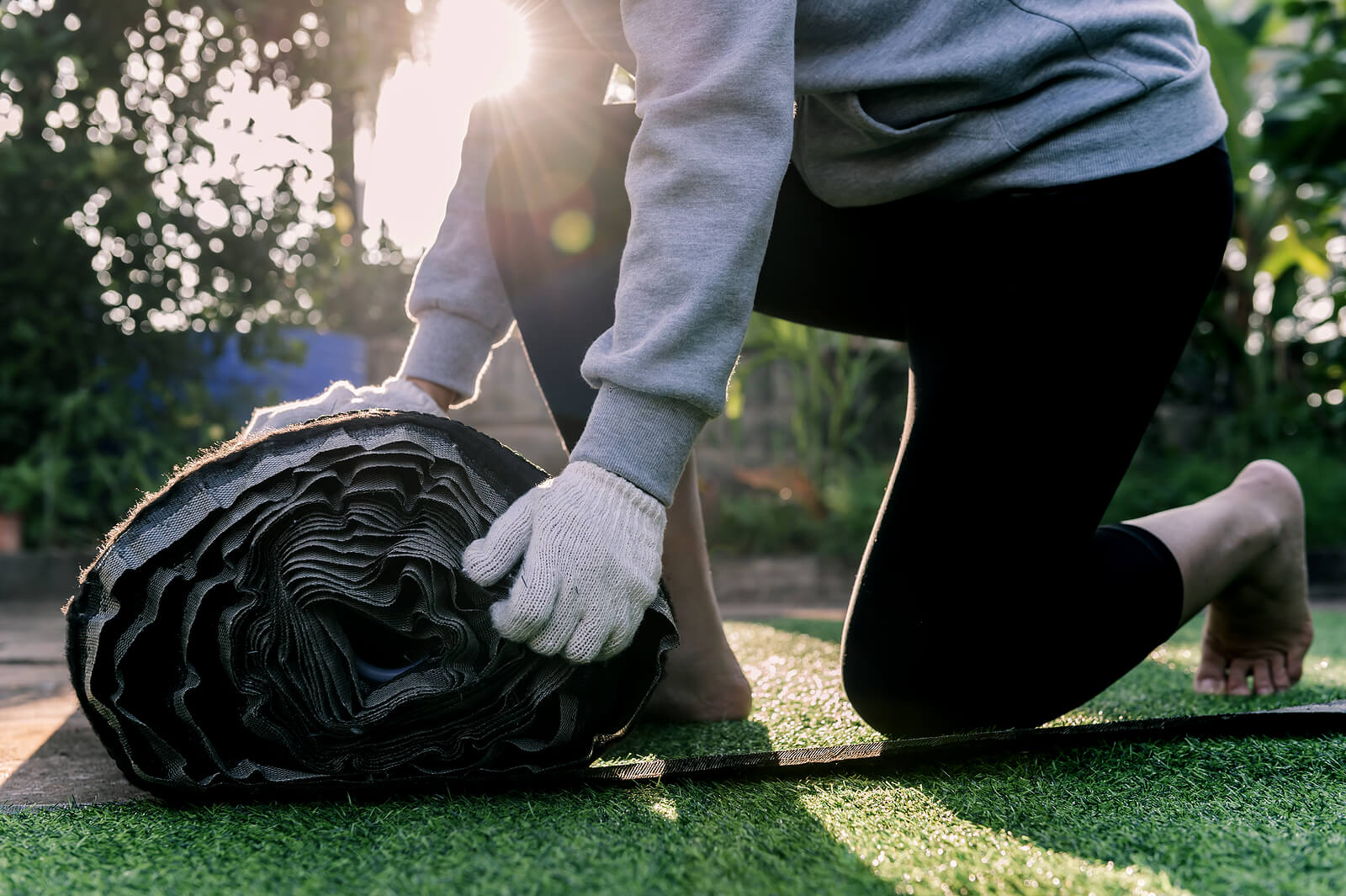The synthetic grass market is set to reach $7 billion worldwide by 2025 thanks to numerous novel uses, a rise in sports investment, and consumers wishing to reduce their water bills.
Popular in commercial and domestic settings, fake grass is undeniably green in colour, but is it green in terms of its environmental impact too?
Join us as we turf out the untruths and investigate how eco-friendly artificial grass is.
What is artificial grass?
Artificial grass is manufactured from synthetic fibres made to replicate the look of natural grass.
It creates lawns, sports arenas and stadium pitches, and grassy areas in commercial and domestic settings.
Why choose artificial grass over natural grass?
Synthetic grass appeals to a wide range of people as it’s cheaper and more realistic than ever before.
Large sports organisations like FIFA and the UEFA Champions League utilise artificial grass for perfect pitches on matchday and to reduce the chance of player injury.
Unlike natural grass, the synthetic version is uniform without hidden lumps and bumps and doesn’t get muddy or slippery in wet conditions.
Premium artificial grass is provided with a cushioned under-layer to prevent injury to sportspeople.
For other applications, fake grass is a low-maintenance alternative to the real deal, requiring no mowing, watering, or weeding. Less maintenance equates to less time and money being spent.
Synthetic grass provides a welcome solution for shady gardens, an easy-care option for older and disabled people, and a safe choice for nurseries and schools where the grass gets heavy use.
The applications of AstroTurf and other brands of fake grass are numerous and limited only by imagination.
How is artificial grass eco-friendly?
Artificial grass is sometimes marketed as eco-friendly, and there are a few ways it can be kind to the environment.
The upkeep of natural grass and lawns relies on the regular use of water, electricity, and fossil fuels if your lawnmower is powered by petrol.
Using a petrol mower produces the same air and noise pollution levels as running 11 cars simultaneously for the same time frame.
With no watering or mowing required, a fake lawn avoids using water, electricity, and petrol.
Likewise, no fertilisers or weedkillers — chemicals that contribute to global warming — are required to boost growth or maintain synthetic grass. Avoiding the use of these products protects you, your children and pets, and the local ecosystem from their effects.
Finally, some artificial grasses are 100% recyclable after use.
The environmental impact of artificial grass

While we’ve outlined aspects of synthetic grass use that are eco-friendly, many product characteristics aren’t kind to the environment.
Natural grass absorbs carbon
First and foremost, to install artificial grass, natural grass is usually dug up and removed.
Natural grass removes CO2 from the atmosphere — to dig it up is to remove that vital function to the detriment of the environment.
Plastic is terrible for the environment
Fake grass like AstroTurf is manufactured from rubber bases and plastic strands.
Plastic is undeniably bad for the environment — from the manufacturing process to its unsustainability, it releases toxins into the earth and puts animals at risk.
Some brands are creating their artificial turf from recycled plastics, but the difference in the environmental impact isn’t significant, and the resulting product is still plastic.
Artificial grass gets hot in sunny weather
Unlike natural grass, which keeps the ground cool, synthetic grass retains heat on hot days and can be a risk to children and animals.
To cool a lawn, you may need to hose it down, which is a waste of water and impossible during a drought or hosepipe ban.
Otherwise, you’ll need to avoid using the lawn in hot weather.
Artificial grass needs to be cleaned
While artificial grass negates the need to mow, water or weed, you must clean it. Depending on what you choose to clean the grass, it could be toxic, and you’ll use water.
Artificial grass has a short lifespan
Many manufacturers claim their fake grass products have a 10-20 year lifespan, which is poor compared to other outdoor landscaping choices.
Individual grass blades usually wear down before that time, making them look imperfect, and weed growth from underneath is another common problem.
Weeds can push the artificial grass rolls up and create a trip hazard.
Artificial grass is rarely recycled
The base and grass strands of synthetic grass are usually bonded in a way they cannot be separated for recycling
If you manage to separate them, they need to be 100% clean and free of soil and sand to be recycled.
Unfortunately, with few (if any) specialist recycling facilities available, most artificial grass ends up on landfill sites, where it will release toxins into the environment for many years.
Wildlife hates artificial grass
Natural grass is home to millions of soil-loving creatures, including worms, caterpillars, spiders, grubs, slugs, and snails.
Grass that’s left to grow houses and attracts even more insects and pollinators, like bees and butterflies.
These insects perform crucial functions in the garden, and some feed birds and mammals.
None of this is possible when fake grass has replaced the real thing.
Final thoughts
While fake grass avoids the need to water and mow — which benefits the planet — it has a terrible environmental impact in numerous other ways.
If you want a lawn at home but don’t enjoy the upkeep — or wish to make an eco-friendlier choice — keep your natural lawn and let it grow into a wildflower meadow that wildlife will love. No mowing is required, so it’s easy to do.
